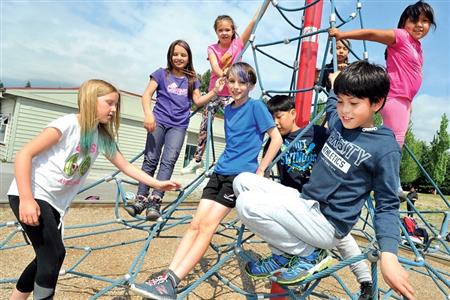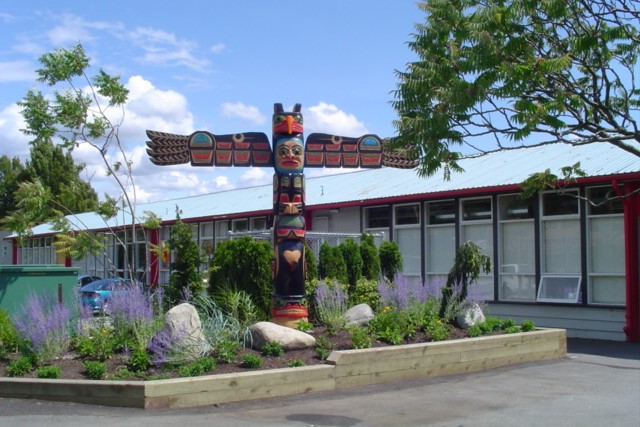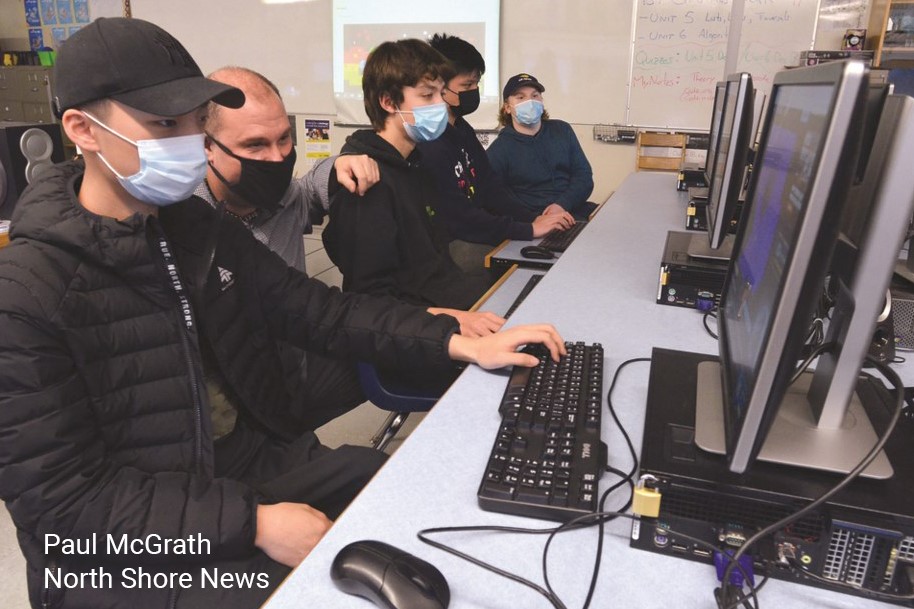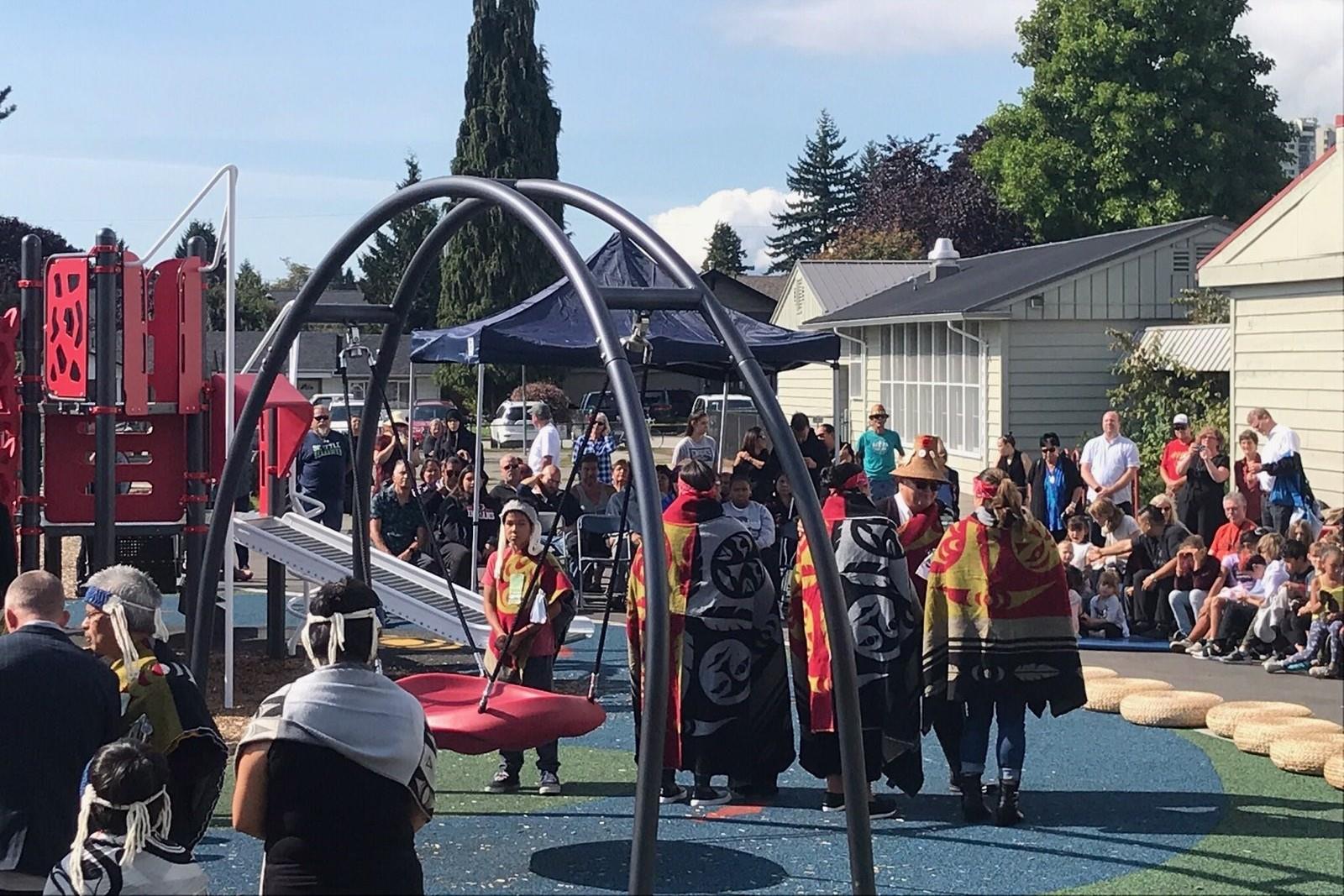
Since 1951 Xwemélch’stn Etsimxwawtxw Capilano Littlest Ones School has brought together Indigenous and non-Indigenous students, parents, community residents, and school staff for the education of now 131 children in a community school in the Norgate area of North Vancouver. In 1996 it was designated as a "community school" under the auspices of the North Vancouver School District.
The "Littlest Ones School", as it is known, is in the Squamish First Nation which is the first urban First Nation to receive support from Rotary's Write to Read (W2R) program. W2R focuses on literacy, learning and life in Indigenous communities, through libraries and learning centres, bringing together Indigenous and non-Indigenous citizens in order to break down social barriers, to build bridges across cultures, and to re-establish positive relationships. The Rotary Club of West Vancouver Sunrise was the leader in facilitating this funding support.
 |  |
Rotary's W2R program support of Norgate Xwemélch’stn Community Elementary School is an example of reconciliation between Indigenous and non-Indigenous people. Nanaimo Correctional Centre made from left over wood the shelving and small chairs and tables for the students in the school library at no charge.
 |  |
 |  |
District Governor John Berry (below centre) and his wife Pat (far left) visited the Littlest Ones School, which has received funding from the Rotary Club of West Vancouver Sunrise and Rotary Foundation grants plus the Write to Read program and school furniture from Nanaimo Correctional Institution.

Write to Read works with Rotary clubs and other partners to secure essentials, including literacy materials appropriate for all ages. The focus is on a designated centre for local Indigenous educators to offer books, computers or tablets, and high speed Internet connections for online learning for their community, that would be useful from youth to Elders. The inclusion of culturally relevant programs, books and online materials by and about Indigenous people and culture is essential.
The primary focus of W2R is to work with Indigenous communities in isolated and under-served areas with limited access to literacy materials and to a designated, nearby learning centre or library. Working with a community-led model and mindset, Write to Read brings together Indigenous and non-Indigenous citizens in order to break down social barriers, to build bridges across cultures, and to re-establish positive relationships. The efforts to improve literacy support accessible, higher educational attainment, social services and improved employment opportunities. It is a solid example of reconciliation between Indigenous and non-Indigenous people.